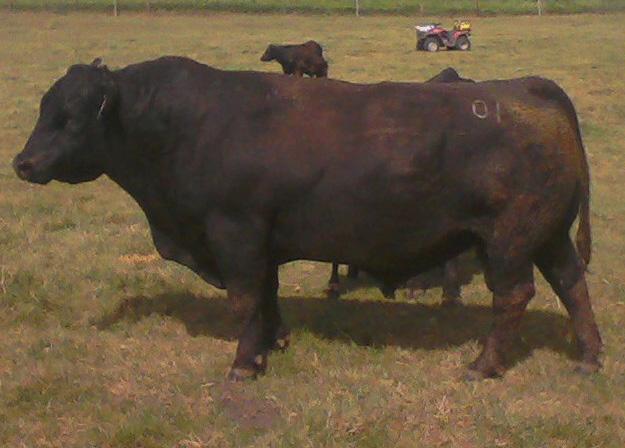


















A
s I sit and write this I find it hard not to think back to when I published the first issue of AngusOne Magazine back in 2012. I find myself in nearly the same spot as with the first issue. The excitement is the same and so is the nerves with the anticipation of releasing a new issue. In my first “From the Editor’s Desk,” I wrote that the magazine was a work in progress, indicating that the first issue was much less refined than I had hoped. That much hasn’t changed and perhaps that speaks more to my nature as a self-defined perfectionist than the quality of what you find in this issue.
However, I do find that I have developed as a person and as a breeder of Angus cattle. Though I still think alot about what this magazine and now the podcast is intended to do, I find that I am bolder and more concise with the vision of both. AngusOne has always sought to create an ecosystem that seeks to preserve Angus history, give representation to the under represented facets of the industy, and to foster in, educate, and inspire future generations of Angus enthusiasts. No different that when this venture started, we aim to put advertising back in the reach of Angus breeders.
One thing became abundantly clear in our travels this year to the National
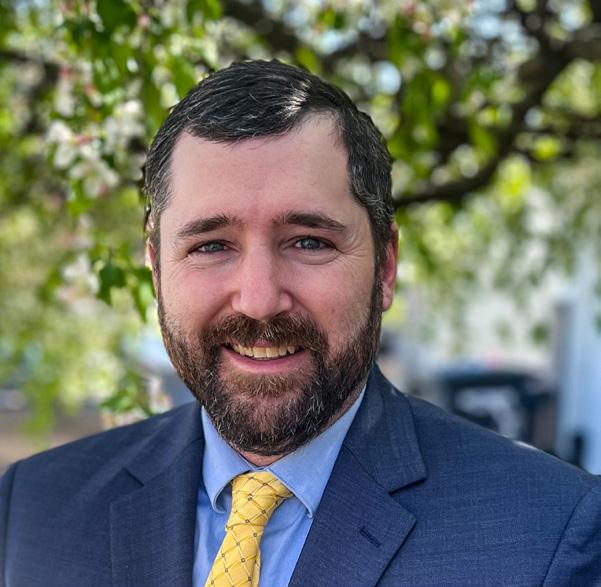
Western Stock Show. TIME MARCHES ON! People are changing the way that they are marketing cattle.
On my previous trip to Denver, 17 years earlier, I remember visiting with a gentlemen that ran a website company specifically for livestock operations, who created a hub to direct traffic to those sites. For the time it was cutting edge. Nearing the end of my college career and looking for more stable employment, I showed them some promotional videos that I had put together for independent clients. Long story short, it didn’t work out.
Video is now business as usual and well accepted as an essential part of livestock marketing. It was crazy to me at the time that anyone would even question that the industry was headed that way.
I’ve slowly watched the narrative unfold around Denver and the Oklahoma Cattlemen’s Classic. I don’t feel that this is an issue of competition between these two monumental shows. I believe that the market has shifted. I don’t find it exclusive to the livestock industry. On a global scale, people aren’t looking to the same sources for information or advertising any longer. Social media, streaming, and smartphones have changed the way we do business, but it has also modified our consumer.
Could I have imagined hosting a podcast 13 years agos? Not at all. Future technologies will continue to create new capabilities as it always has. The only thing constant is change. With the speed of the internet, we can be overwhelmed with so much information in short time that it is like taking a drink of water from a firehose. Like much of the water in that pursuit, much of the information misses the intended audience.
One of the conversations that lead to the development of our podcast & the reviving of the online magazine was a seemingly innocent conversation about trying to find a picture of a cow. It was a scenerio that I noted was becoming more and more common. Many of the webpages that I had bookmarked as resources now no longer exist as the hosting has expired, because those operations or companies no longer maintain a website. Many short run publications can be found on Amazon at exorbitant prices. The information in those texts or pictures are lost to so many.
The pictures & texts, pale in comparison to the libraries of information that we lose with the passing of our most skillful breeders, industry professionals & historians, whom have forgotten more than we will ever know.
Emerging technologies are giving us the tools to immortalize that knowledge base, even if it’s only tiny pixel of an immensely larger picture. We have the means to bring greater access to those resources. When we look back 13 years from the publishing of this issue, we’ll be doing so from an ever evolving ecosystem, that will be unthinkably different than
the one of today and the one you see today is drastically different than the one of yesterday. The marketing of your programs will need to adapt just the same.
I speak from experience of the conflicting nature of marketing. It’s not called a “shameless plug” without reason. We all want to receive the best price for our animals and all have different motivations for that, but I think the vast majority of us want it not for bragging rights, but for the continuation of our way of life. That concern comes from a place of integrity, largely because we’ve seen the misrepresentation of the vocabulary the describes what we are actually trying to accomplish. Words like “maternal,” “sustainability,” “efficiency,” and of late “Bonsma,” seem to generate eye rolls. Those that are most qualified to wield those terms have long become wary of using them, because they have been cheapened by their wholesale misuse, taking the concepts out of context to push an overreaching agenda.
When the first issue of AngusOne Magazine was published, it was born out of the frustation and struggle of trying to find animals of a specific type and pedigree. The more I searched the more that I found that they were out there, but were under represented in the media of the day. That hasn’t changed, and that makes our cause all the more important today. Though we may sometimes have reservations about the necessary evils of advertising, if we don’t tell our story, what narrative will lead the way? If we want acceptance of our way of life, then we have to preach it from the highest mountain. It is my hope that AngusOne becomes that mountain for you.


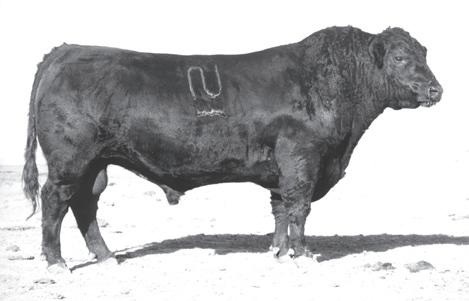

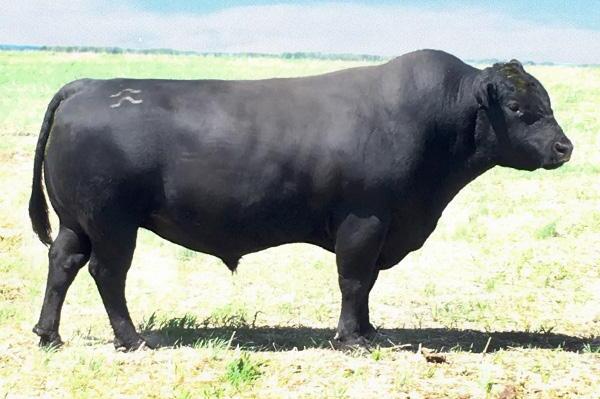







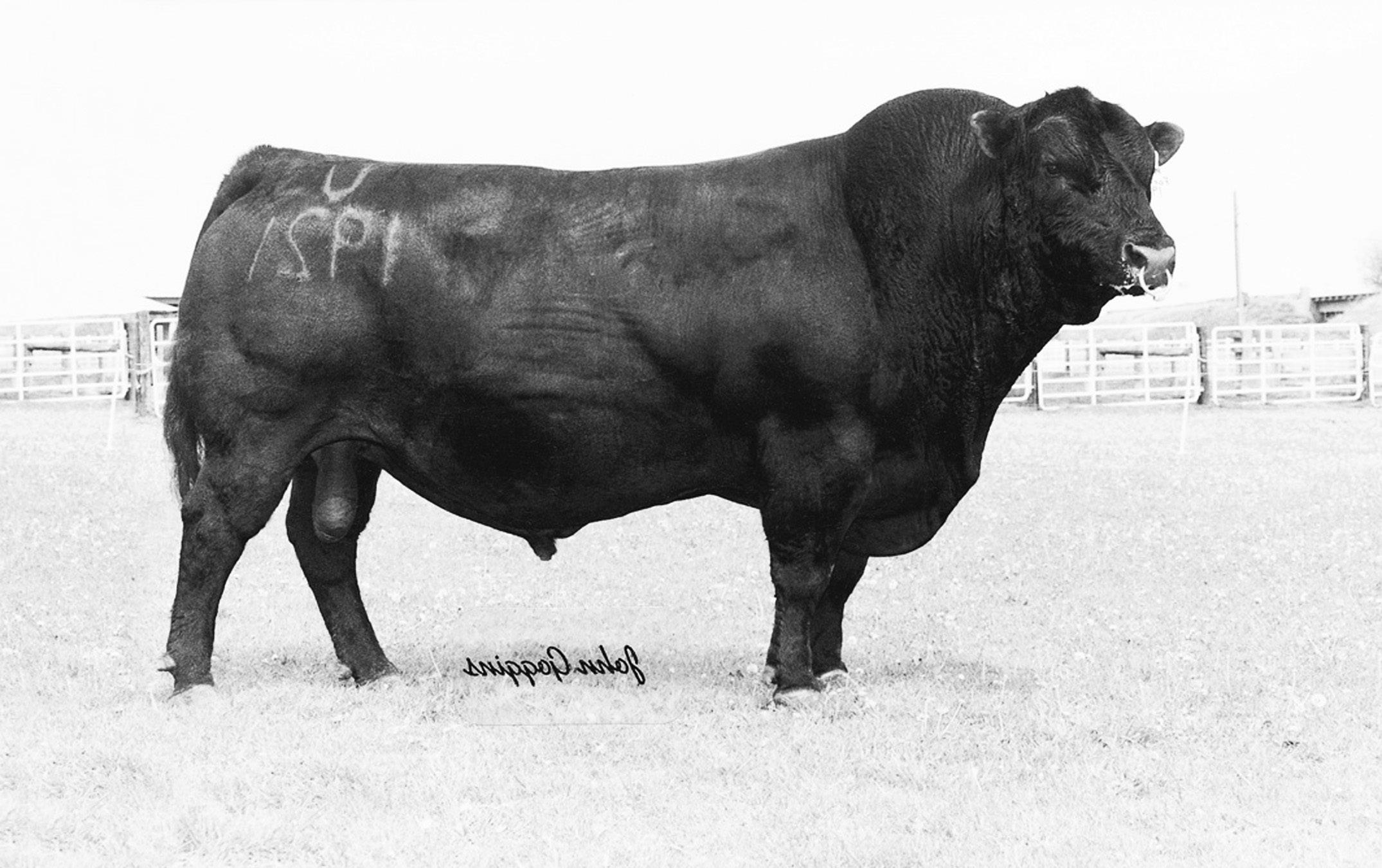
By Dennis Voss, Horse Butte Ranch
In 1992 I was studying the Performance Breeders’ bulls rather intently at the 4C’s feedlot near Joliet, Montana. I became very interested in the Envious Blackbird cow family, especially Envious Blackbird of RR 7066 (9017790). This cow family still intrigues me to this very day because of the short gestation, the muscle and the low back fat. I arrived at the sale early. The Performance Breeder’s bull sale was one of the great bull sales in America. At that time four enthusiastic members formed the original group known as the Performance Breeders; John Hamilton, Dale Davis, Dave Hinman, Bill Davis and all of their hard working families behind them.
As I went through the offering, I couldn’t find PAPA 8832 Optimum 1921 (cane code 90AN0368). So I found Dale and he informed me that this bull didn’t quite fit the rest of the Optima’s. The Optima’s that year were a featured set of bulls in volume. Dale said PAPA 8832 Optimum 1921 was just a little shorter framed bull. I said I knew that and came to buy him. He said, “After the sale I’ll drive you up to look at him. If at that point you want him, I’ll
sell him full interest, full possession for the average of the sale today”. The sale was another one of those Performance Breeders barn burners with superior support from many top commercial cattle producers from all over the country and especially the northern Plains. I purchased the top selling bull, PAPA Crusader 1925 for $16,000 and the third high selling bull CH Revival 104 for $11,000.
After the sale a group of us went with Dale to see PAPA 8832 Optimum 1921. The outfit was full of guys curious about this bull I was going to buy. We drove into the pasture and he was up on top of a hill and man was he stylish. Shorter framed, but very stylish, very fluid on his feet and very proud. One of the proudest bulls I have ever been around, proud of himself, proud of his sire, proud of his mother and proud of the Angus breed. I said, “Dale it’s a deal”. Dale said, “Sold for $2,816 the average of the sale”. Some of the other guys in the truck asked, “Any chance we can be a part of this”? And I said no way...
...We drove back to the big party in Belgrade where the dialogue flowed with vigor. I started getting teased about the bull I bought after the sale. Guys called him a little pud. He wasn’t. They wanted to know what I was going to use him on and I said heifers. One renowned bull breeder said, “Heifers? That big headed, big shouldered, little bastard - heifers?” The guy’s one of my best friends and I won’t embarrass him by naming him in this story.
As soon as I got him up to the ranch, I invited my friend Lewis Hagen, who was with Accelerated Genetics at the time, to take a look at him. Lewis came up, took one look at him, and saw his whole future. He said, “We’ve got to change his name Dennis. This bull is going to go somewhere. How about the name Forte?” I said, “Lewis, you’re a genius. This bull is so proud that the name Forte couldn’t fit him better.” Lewis went right to work. He started getting people interested in him clear down in South America and Australia. Accelerated Genetics leased him and the next thing I know, Dale Davis is calling me on the phone. Dale says, “What the hell are you and Lewis doing up there with this Forte bull”? I said, “Dale, this bull is going to be famous”. Dale says, “I know, I know, but I didn’t save an interest”. I said, “That’s simple Dale. Send me $2 and I’ll transfer a third interest, no problem.” I still have the $2 bill framed in my ranch office along with a wonderful, kind note from Dale.
PAPA Forte 1921 (cane code 14AN123) collected well and we used him on heifers the first spring. Erica and I drove him down to the heifers in a trailer. A bunch of them were grouped up there, some of them in heat, Forte gets out of the trailer, looks around, puts on quite a show, feels so good to be out that he goes bucking over the hill with the heifers in pursuit. His calves were born the next spring as easy as any heifer bulls’ calves we’ve had since, most of the time at least two weeks early, sometimes three weeks early. Extremely vigorous, little heifer companions. Erica and I always got a kick out of the Forte calves. As time went on and we got more of them, we could identify them by the way their small ears set on their heads. His daughters were the same way. Whatever they were bred to, you had better be ready two weeks in advance. We never had a mean Forte cow or
bull. Proud? Yes. Shake the chute a little? Yes. Make you wonder? Maybe, sometimes. And never to this very day will I ever go along with the idea that the bull produced nasty disposition, which became part of the mantra some purebred clowns like to stick on him. One rumor about a bull and misinterpretation turns into a big deal with the wink, wink, nod, nod, purebred hypocrisy crowd. Forte himself was a bull we could scratch and while he put on quite a show, he never charged anyone that I knew of. This bull was proud, and there is a difference.
Some of the finest cattle breeders in the country know the value of this bull and the great tribute he was to Dale’s program. In those years PAPA Forte generated thousands of dollars. Probably one of the most incredible bovine investments Horse Butte Ranch ever made. He was hot property in South America and Australia and worked really well in their grass oriented programs.
In later years, master bull man Scott Spickard used Forte in the international barn at Hawkeye/ Genex to rev up bulls that needed a little libido fire. He said PAPA Forte would absolutely drive the other bulls in that barn crazy with his antics, his bellering and his big time show. He said it made the other bulls collect better.
As Forte grew old in the international barn, there came a day when Scott said we had probably better let him retire soon. In 1998 our good friend Dave Duncan of High Valley Angus Ranch purchased a third interest in Forte and just like magic with all of his new connections and respect, the sales took off again...

...In 2003, when he was twelve, we brought him home to the ranch and turned him loose on the creek bottom in the first pasture where he had bred heifers. He lived down there by himself for about another eight months. We figured he probably had a heart attack and we figured he’d lived about thirteen years. His impact on our herd and many others was profound. One, he shortened gestation. Two, he developed strong marbling and ribeye data with low backfat, a very rare combination of EPD’s. Three, he added muscling. His daughters may be the best of the whole deal. They are very efficient rangers of grass with excellent udders. The proud factor in the bull set the stage for what I feel is an essential ingredient in range cattle breeding. Range cattle are very different from small lotted, hobby cattle farms, backyard purebred breeders and any feedlot mentality type operations. Forte was about raising cattle in big open spaces where survival is essential to profit. In that respect Forte was one of the great bulls of Horse Butte Ranch and still has numerous daughters in production and will be used in the future as well.
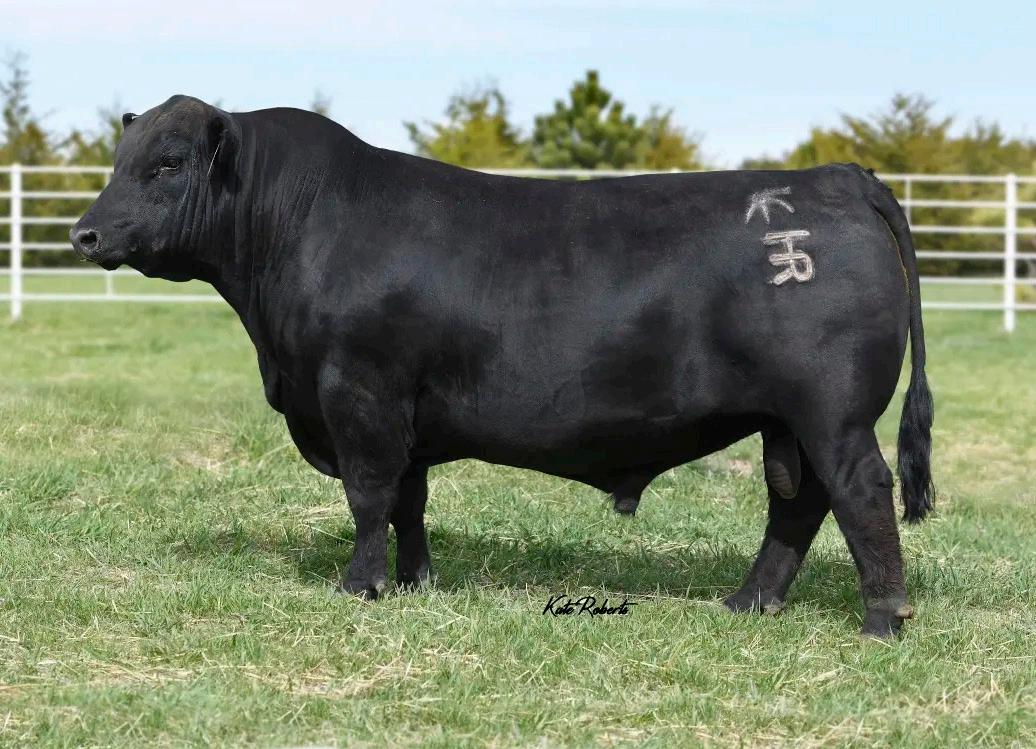
A very special thank you to Dennis Voss for granting us permission to republish this story.
[D2F-M1F]
Birth Date: 02/13/1991 Tattoo: 1921
Parentage: Blood type, Microsatellite, SNP Genomic: HD50K Genomic Prog: 44
Breeder: 128803 - Dale H Davis, Belgrade, MT
First Owner: 128803 - Dale H Davis, Belgrade, MT
Owner(s): 128803 - Dale H Davis, Belgrade, MT
149363 - Dave Duncan, Ellensburg, WA
265699 - Horse Butte Ranch, Two Dot, MT
P S Power Play (AAA #8974207 {RTF}
Scotch Cap (AAA #10226429)
Hoff Band 07 of S C 509 (AAA #9538351)
SIRE: Papa Optima 9818 (AAA 11294119)
Q A S Traveler 23-4 (AAA #9250717)
Blackbird D H D 2816 (AAA 10191394)
R R Blackbird D H D 903 (AAA 9412565)
Cottontail Maternal POWER464 (AAA #10631334)
Papa Rito T Power D H D 6838 (AAA 10846673)
Envious Blackbird D H D 3811 (AAA #10381715)
DAM: Papa Envious Blackbird 8832 (AAA 11136434)
PBC 707 1M F0203 (AAA #8252710)
Envious Blackbird of RR 7066 (AAA 9017790)
Envious Blackbird of RR 3026 (AAA 7853778)
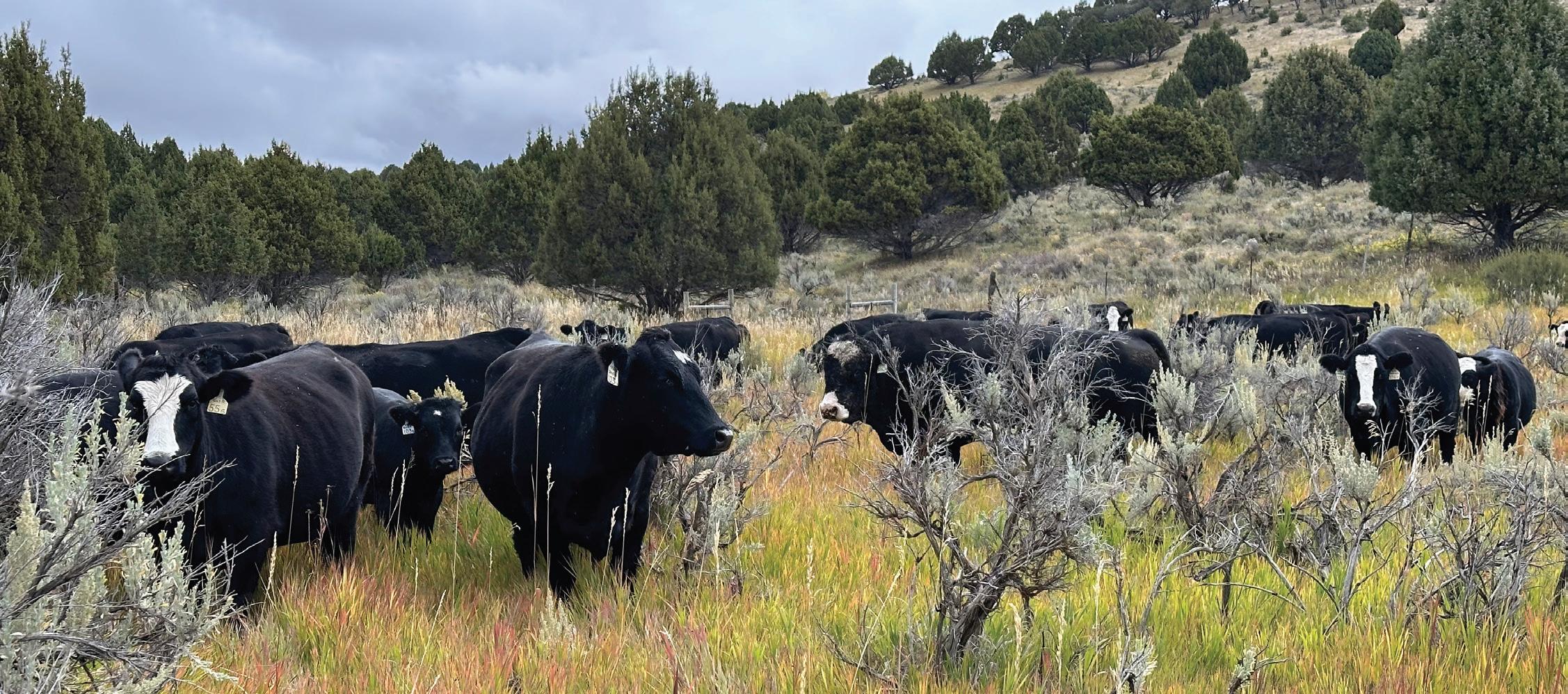
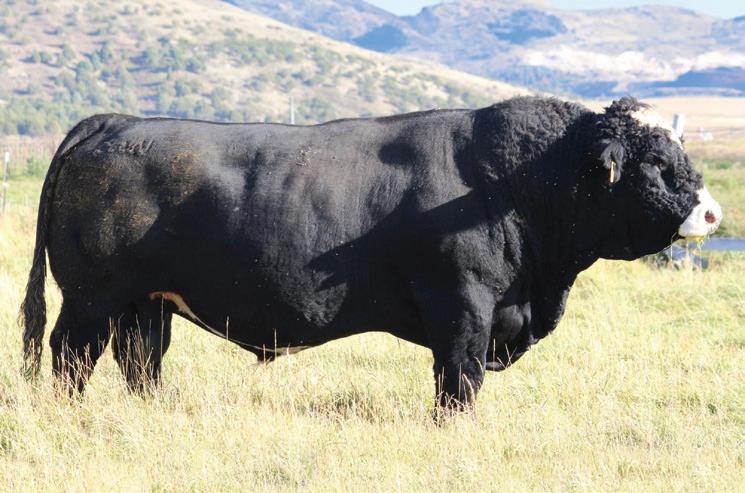


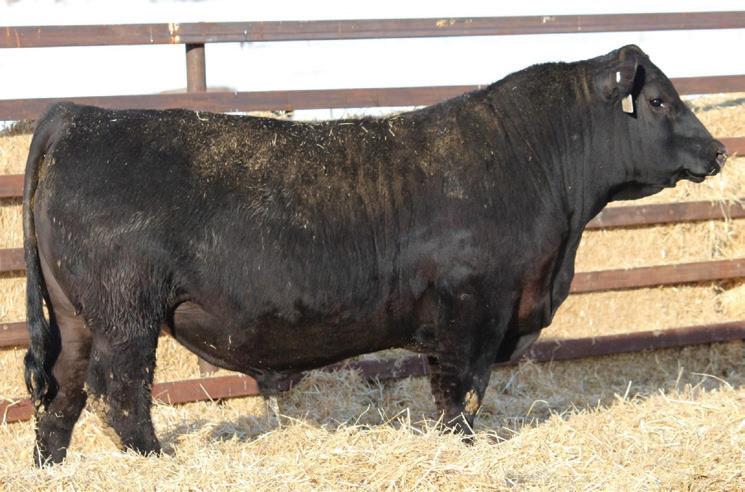
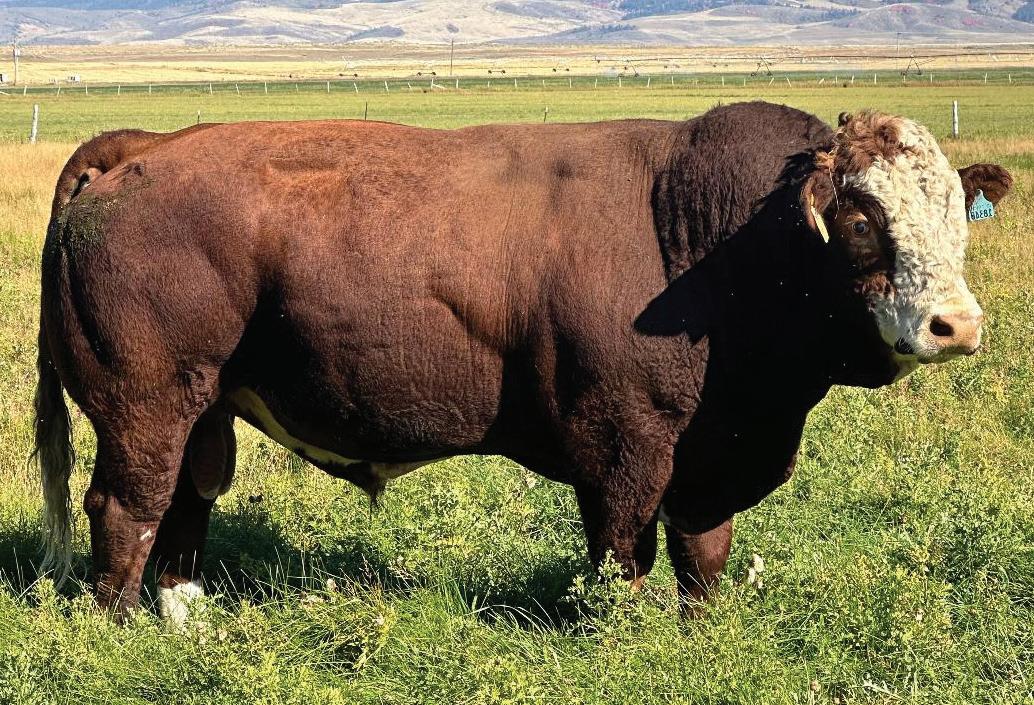



JOur program is built around a base of maternally efficient bulls and females that thrive in grass and forage environments. We believe in breeding easy fleshing, moderate frame cattle that work in the real world. Contact us for all of your replacement needs.
• Kurt Jauer (712) 253-8710 • Doug doug@jauerangus.com
www.jauerangus.com
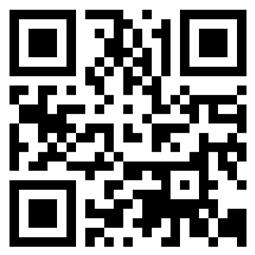
Featured A.I. Sires...
Jauer Emblazon 78 203
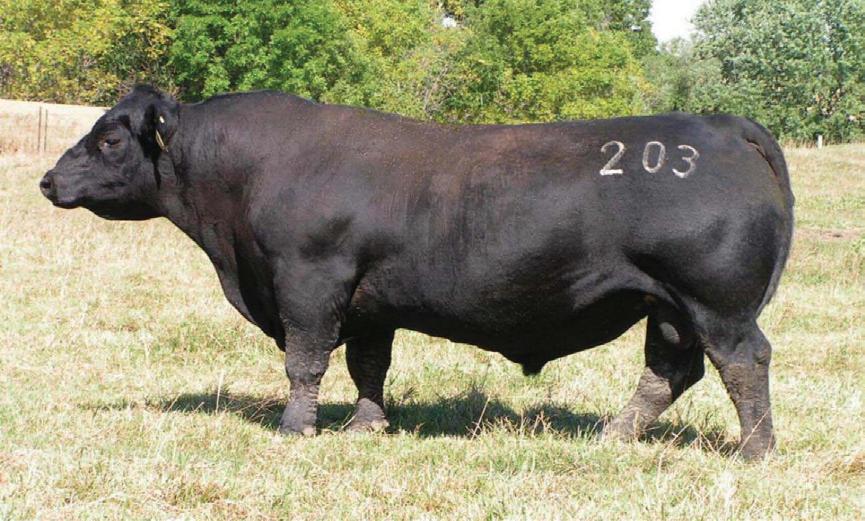
DHD Traveler 6807
OCC Emblazon 854E
Dixie Erica of CH 1019
OCC Anchor 771A
Jauer Anchor 78 5158
Jauer 268 Durabull 5158 659
Linebreeding Emblazon back on Anchor produces a genetic package that yields powerful maternal Angus cattle. Jauer 203’s progeny are extremely consistent. They have tremendous depth of rib with great profiles; his replacement daughters are among the best we have ever seen. Semen - $85/straw AI Certificates - $35

Jauer Earthquake 738

OCC Rear End 751R
OCC Big Time 746Z
Dixie Erica 771R
Jauer Paxton 4032 8030
Jauer 8030 Paxton 0364 2151
Jauer 779 Neville 7400 0364
Earthquake is a massive bodied bull. He is wide sprung with a great deal of growth. His pedigree is stacked with genetics that give him the impressive performance and eye appeal he exhibits while delivering the maternal efficiency that gives him his balance. Semen - $35/straw AI Certificates - $35
S R Rainfall 046
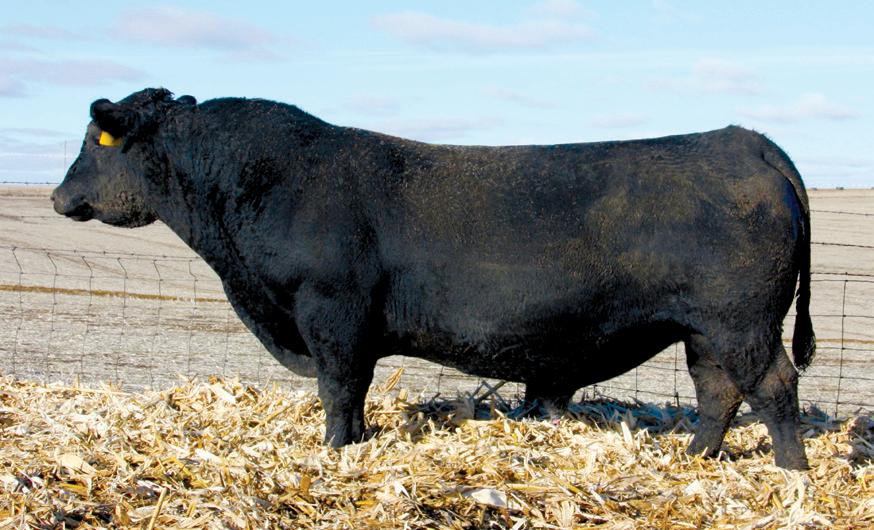
Coleman Charlo 0256
SAV Rainfall 6846
SAV Blackcap May 4136
SAV Regard 4863
SR Lady Blue 8139
SR Lady Blue 118
The SR 046 bull is a recent acquisition from the Strommen Ranch in North Dakota. He is an outcross bull that compliments our maternal genetics by adding growth and length of body. His sons and daughters are already making their presence known in a big way. Semen - $35/straw AI Certificates - $35

By Brock Boyle
This is the story of my journey with Angus Cattle. It is my hope that it can serve as an inspiration to those starting out, or for those that are further into your journey, helps you to reflect on how you got to where you are today.
At five years old, I entered the cattle industry on the business end of a calf bottle, with my first bottle calf. It was merely sparks to the fire & passion that I have today. From that experience, I had the good fortune to piece together groups of commercial heifers, a couple at a time. We had every shape, color, & style imaginable. Now in reflection, I realize the power of those lessons. Using AI and mid-level clean up bulls, a picture emerged of the cows that were truly productive and the biological type that I wanted to propagate. Time has taught me the patience to move the pendulum slower than what I may be tempted to do. Often the animal that I am truly trying to produce is within three generation’s reach.
Lesson: Be patient! Give yourself room to grow, learn, & enjoy the journey.
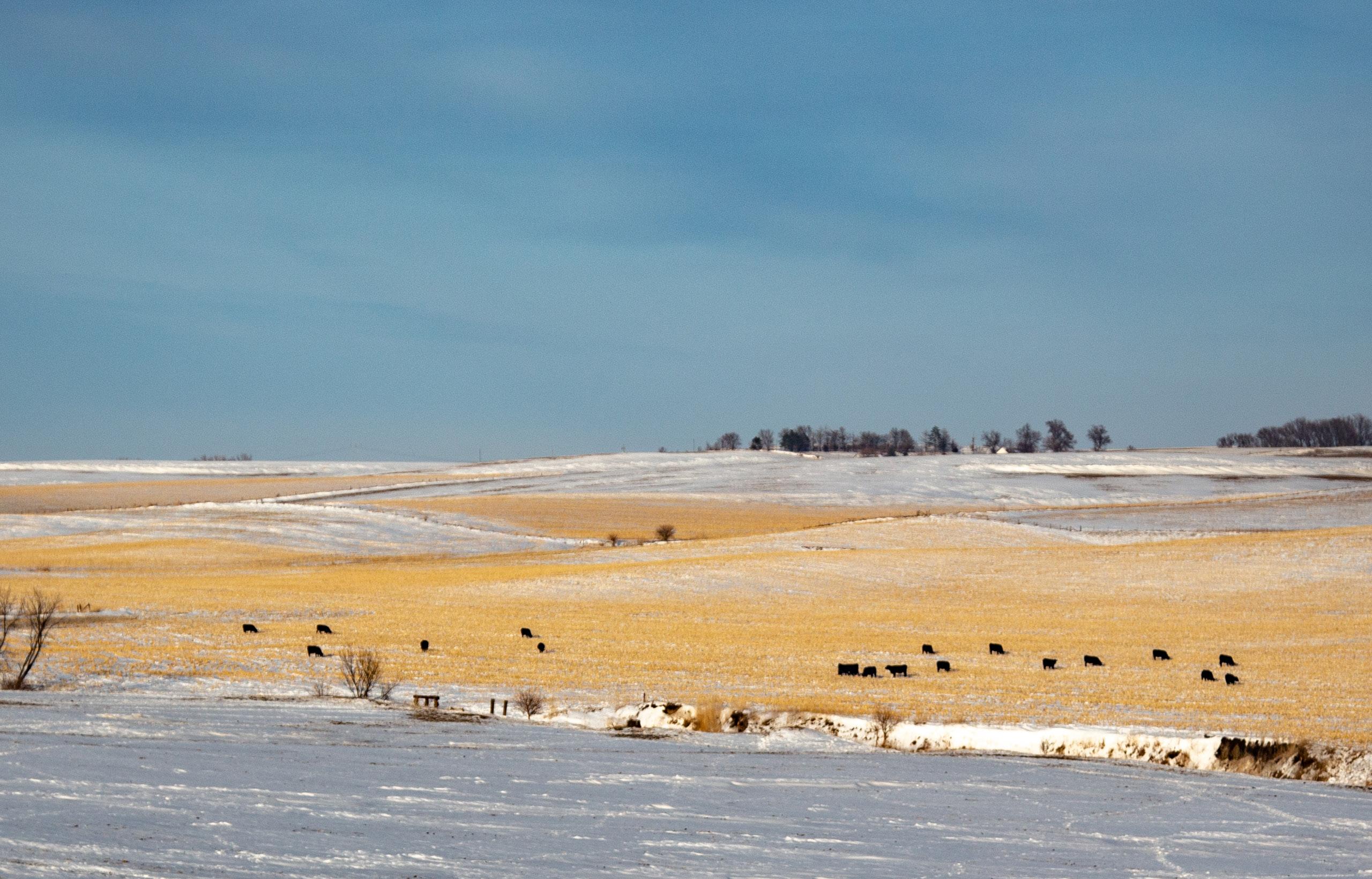
At age 15, my Dad and I attended the Jauer Angus annual production sale, as we were looking to change out bulls. The year was 2008 and it was my first production sale. I remember the excitement of seeing the uniform type & kind, that matched the vision that was already starting to form. I was blown away by the experience and bought my first few registered Angus cows at that sale. I was hooked and soon after I found myself at a few other sales and added to my growing herd. Some of those were more mainstream pedigrees and types.
Looking back, I realized that I was trying to learn from anyone that would give me the time of day. I was getting pulled in a lot of different directions and getting conflicting advice. I am extremely fortunate that a few producers took me under their wing and gave me the opportunity to put in some embryos to test their genetics. I am grateful to them for the opportunity, especially so to Tim Reimer. The base from those embryos has really set the course for the herd that exists today.
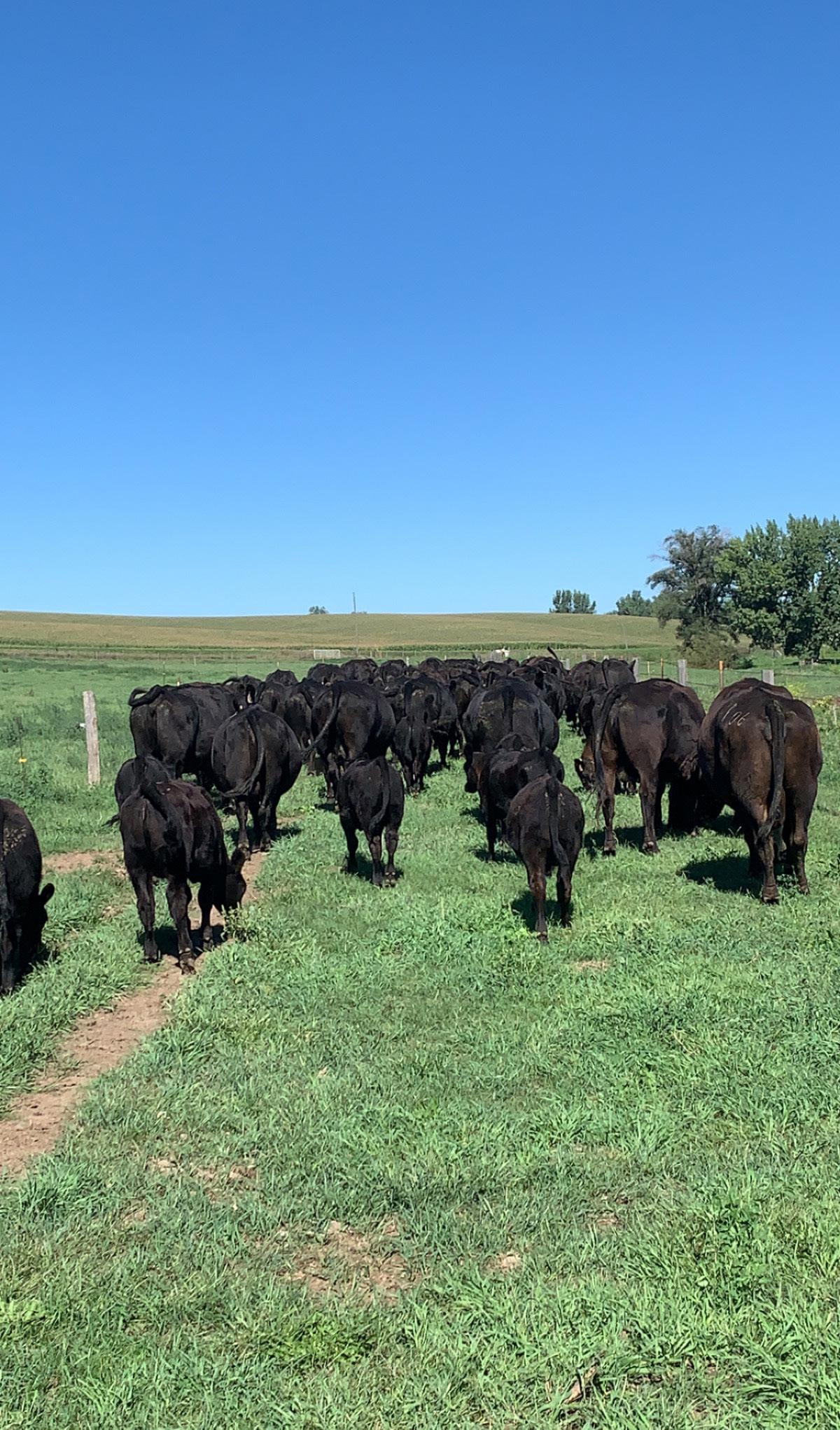
Over the course of three summers, I put those embryos in, which resulted in about 20 registered females to work from.
Lesson: Think critically! Be careful of who you listen to and what you do with the information. Many people are just out to make a sale and fewer want to see you succeed or are willing to take the time to understand what will serve you best. Mentors are those few that make you and your operation better.
The next chapter of my life took me to Iowa State University. In hindsight it was the best thing that could have happened for my herd. Stepping back and letting the animals fend for themselves was a great sorting tool. It let those animals prove what worked & what didn’t under minimal management in my environment. The cattle took a back seat, as summer jobs took center-stage to ensure as one employer coined it “that I had money for wine, women, & song.” Management was kept to the essentials of keeping the cows bred, fed, & alive. The cows ran with our bulls and were managed like any standard commercial herd.
When I returned home in 2015 after graduating from Iowa State, not much changed in the management other than incorporating AI on the cows that I really saw working. Noticing that some of those cows were getting older and were the type I was really desiring, I began to flush some of those cows and put in embryos over those subsequent years. The cattle I created during that time are a strong part of my herd today. It reinforced my confidence in the path that I was on, and I realize today just how important that was.
Chris Jeffrey once said to me, “The first $100,000 you spend in this business is tuition…after that it’s an investment.”
The advice was timely as it came right as I was crossing that threshold in building my herd. It was a piece of advice that helped me reshape & rethink where I was as a breeder and with my herd. It triggered me to reflect on my existing lines at the time, which were: Rosetta, Iris, Roslin, and Ella cow families. All of which are still integral today, along with the addition of the Dixie Erica, Donna, Revolution Rose, Blackbird, & Zara lines. Those lines form the nucleus of my program that
is primarily Ohlde breeding. This nucleus of lines work together to create inter-herd complements as they are intertwined together adding greater dimension to my breeding program.
Lesson: We all pay tuition in this business. Learning comes at a cost. We all get bit, and no one is immune. Build a mindset that allows you to take the lesson, learn from it, and move forward.
Anticipating that the market was primed for a big run in 2021, I started the search for a set of heifers to breed with plans to market them as bred heifers when the market hit full stride. I went through several commercial herds, and found what I was looking for in a group of SimAngus heifers in Montana. I bred them with my Angus heifers and as a whole they had a 96% conception rate. Life was good! The market was heating up and I heard early reports of $2500/head. I listed them for $2400, but the highest offer that I received was $2,100. The market’s tone had shifted and uncertainty loomed among buyers. Still, believing record prices were ahead, I decided to take the risk, hold onto the heifers, and finance them with a term note.
Lesson: Sometimes you can be right and still be wrong, but stay resilient and find a way to win.
Calving 140 cows with the vast majority being heifers, in a setup built for 70 brought a whole new set of challenges. Calling it stressful would be an understatement. With these heifers calving a month earlier than usual, weather was a major concern. In Iowa, spring mud makes large-area calving difficult, and tearing up crop ground or pasture isn’t ideal. If it’s dry, we use cornstalks, but with coyote packs of 10 roaming, that’s risky.
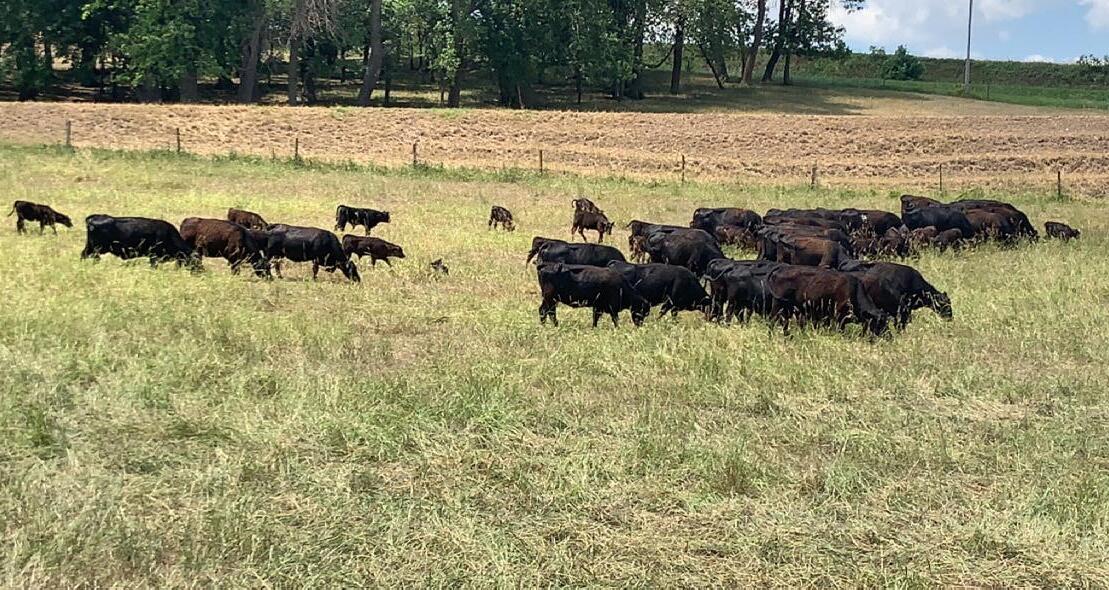


Fortunately, careful selection paid off—these heifers were excellent mothers. Even with tight space we made it work. I found enough summer pasture although the amount of polywire strung that summer was several miles, in terrain you wouldn’t believe exists in Iowa. The heifers raised strong calves, the market rebounded, and I sold the calves at a solid price with a decent rebreed.
Lesson: Bet on you! Sometimes that means backing it up with sweat and determination. If you’re going to be bold, you better have work ethic.
Ready to take the next step, I sought out herds with strong Emulation cow lines. At the time, I had 32 registered females. When the opportunity arose to buy into a couple of Emulation-based herds, I made the tough decision to sell my commercial heifers and trade up for registered cows. Growing up I always heard that EXT females were highly sought after, so I decided to do my homework on moving in that direction. It was a hard decision. I knew and liked the cows I had, but with limited space, I took a leap of faith. Over seven years, I had studied the Emulation lines, experimented with some semen purchases, and created a few crosses. The results were impressive, they complimented my existing cattle well, especially a portion of my herd that needed improvement.
Overnight, my registered herd jumped from 32 to 90. The adjustment was significant, especially since most of the new cows traveled in from over 1,000 miles. Allowing them time to adapt was key, so I did my best to mimic their previous environment: adjusting handling practices, providing the mineral they were used to, and offering grass hay for the first 45 days as they learned from my cows how to survive & thrive in Iowa.
Lesson: Sometimes, one bold decision opens the door to even greater opportunities. Trust the process and trust your herd’s ability to adapt. They’re learning right alongside us. There is a time and place for grace in that process.
I made a deliberate choice to preserve parent lines. To build the herd that I envisioned, I needed to maintain segments of my existing cattle on their current path while blending the outliers of those parent lines to create “hybrids.” This has evolved into our “three herd” concept. This journey has been incredibly rewarding, as each “herd” challenges me in different ways, making me a better breeder.
Three years into this concept, I will tell you as a breeder, cattleman, and as a person I’ve hit just about every pothole you can imagine. Yet the vision is coming to life, and each step forward reaffirms that the dream is within reach and was worth believing in. There is nothing fast about getting to the next crop of calves but man do cows seem to get old fast. I know I only have so many shots with each cow, which adds to the gravity of each breeding decision. It highlights the importance of maximizing every opportunity and absorbing every lesson. This business is pure passion: it will test you, demand sacrifices, and pull you away from other parts of life when you least expect it, or when it’s the most inconvenient. But I wouldn’t have it any other way.
Lesson: This is your journey! Embrace every challenge, trust your path, and have the courage to stand out. Stay true to your vision, and most of all, enjoy the ride.

BB
